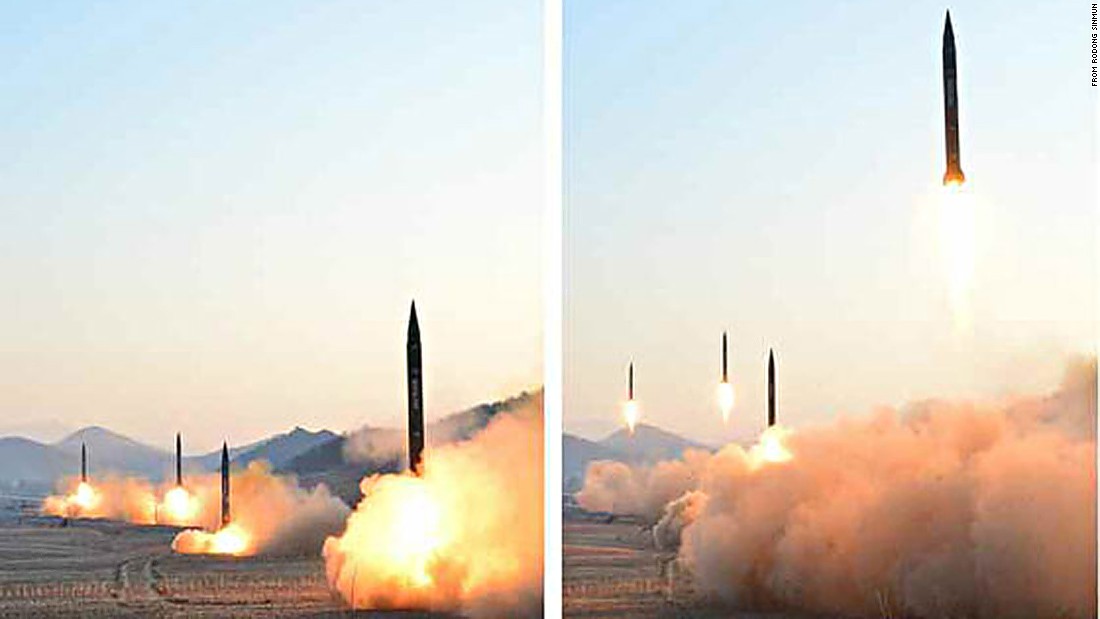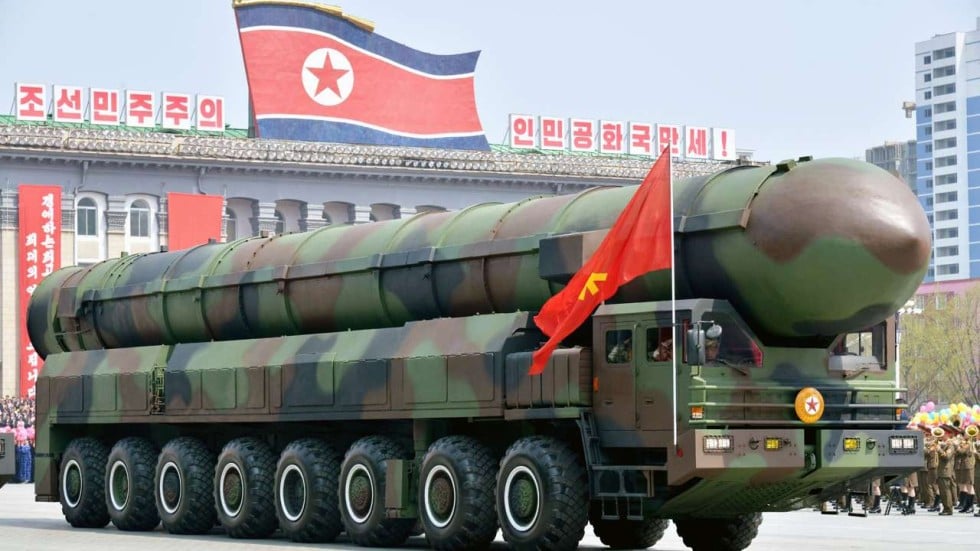On January 26, 2018, members of the Chesapeake Bay Organizational Development Network (CBODN) facilitated a public session to explore the dynamics between the USA and North Korea. The Wall Street Journal had recently reported that the Trump Administration was seriously considering the “bloody nose” option of a limited conventional strike to break the standoff between the two countries and initiate meaningful negotiations. Obviously, this option was considered high risk, by a number of commenters, given the level of retaliation that would likely follow. The other option was diplomatic engagement with the threat of increased sanctions. However, years of diplomatic efforts and sanctions had so far failed completely to persuade NK to abandon its nuclear ambitions. Between the two extremes was the current situation of uncertainty and ambiguity. Both states were engaged in the boasts, insults, threats, and justifications of classical saber rattling that often precedes an outbreak of hostilities. As professionals who work to resolve conflicts in large systems, the CBODN members felt called to utilize their tools and expertise to look for potential solutions.
The analytic tool chosen for the exploration was a process known as systemic constellations. The tool is based on systems thinking and embodied learning theory. Once the analytical question is clearly articulated the key actors in the system are identified. Representatives for those actors are selected and placed spatially in relationship to each other in a way that replicates the current dynamic within the system. Various scenarios based on a tentative hypothesis are introduced and observed to see how they play out. As described in the book, Confessions of a Corporate Shaman, the process is used to explore individual, organizational and social issues.
The tool offers a heuristic for “going to the balcony” and enabling a meta-level perspective that might reveal previously unseen connections and motivations. While the tool is similar in some respects to scenario planning it also possesses an embodied, learning component which may uncover new insights not conceptualized by other means that are solely cognitive.
The primary analytic questions we asked ourselves was about the viability of military force versus diplomacy to resolve the crisis. Was the USA serious about the bloody nose option? What would happen if the USA did implement that option? Were there unknown factors that, if brought to consciousness, might open new possibilities for reconciliation?
Our group of participants included two Americans who had spent time in South Korea for business and defense-related purposes and one South Korean who was involved in monitoring the status of human rights in North Korea. The other participants had little experience with the region but were aware of the rising tensions between the two countries and concerned about the ramifications. Ironically, the group supported analysis was conducted in a meeting room just a few blocks from the State Department in Washington DC.
Three people were set up to represent South Korea (SK), North Korea (NK) and the United States (USA) and begin the analytic process. NK took its place in the middle of the room and stood staring at the USA. The USA paced back and forth on one side of the room glancing furtively at NK. These behaviors arose spontaneously in the representatives without any premeditation or acting as if. SK moved to a place behind NK and stood there at a distance observing the dynamic between the USA and NK with a demeanor of helpless despair. The tension in the room grew. NK glared defiantly but did not move as a worried looking USA continued to pace. NK reported feeling powerful and in control but not happy about its power.
Besides tension, there was also a sense of pain in the room. A representative was placed off to the side for the traumas people had experienced in the region. It was pointed out that besides WWII, the Korean War, and human rights abuses in NK, Japan had a long history of intervening in Korea including its occupation of the county from 1910 to 1945. NK refused to look at or acknowledge the pain brought on by these collective traumas. The only thing that mattered was holding on to its power because power meant survival.
After the representative for collective trauma was given a place SK moved to the side of the USA. They both paced while NK watched impassively. They had the sense that this standoff favored NK. A representative for China was brought in. China stood facing the right side of NK. He reported feeling annoyed with the USA. Why should he disadvantage himself for the sake of the USA? It did not serve China’s national interest to see this issue resolved. The two Koreas united under the influence of the USA would be a threat. As long as China was part of this situation the sanctions on NK would never be fully implemented.
The USA seemed at a loss for what to do and stopped pacing. SK judged that the USA was not a reliable partner and did not have sufficient resolve to deal with NK successfully. A representative for the “bloody nose” option was brought in. She also felt the USA and SK were too weak to act on their own. She sought help from China but was rebuffed. Finally, after a period of uncertainty and confusion, she snatched the purse next to NK that represented the nuclear weapons. NK scoffed at the USA, declaring that object was just a decoy. She still had plenty of weapons the USA could not reach or find. NK reported feeling contemptuous towards the USA and its ineffectual use of force. Surprisingly, NK did not feel the need to immediately retaliate.
As the potential for rapprochement grew between NK and SK, China reported losing interest. As SK continued to acknowledge NK’s place and importance NK reported her eyes were beginning to open and she could see SK and the other nations with less rigidity. The USA and China stood back and allowed the rapprochement to continue. SK offered NK money and assistance. NK did not take it. SK and NK looked at their parent figure. Both were willing to consider the figure as a part of their future as well as their past. SK was emotionally touched by NK willingness to engage with him and the parent figure. As that engagement unfolded the tension in the room was slowly replaced by a feeling of connection and shared humanity. NK did not understand this appeal to humanity and brotherhood. Her bottom line was still being respected in a way that insured her power. But she was willing to move in small increments towards SK in response to his overtures.
The facilitator ended the analysis at that point of resolution. During the discussions afterward, the participants who were new to this process reported their surprise in the depth of feeling and insight that arose spontaneously. It was agreed that the “bloody nose” option and the increased sanctions had little chance of resolving the issue. NK was not going to give up its nuclear weapons as a result of limited and unilateral, military force or multilateral, economic coercion. While it came as a surprise that NK did not retaliate the “bloody nose” strike the lack of any movement to negotiate with the USA seemed to support its futility as an option.


The one possibility that held promise was the rapprochement between NK and SK through the aegis of their shared history as one country. Interestingly, after this analysis was conducted SK pursued engagement with NK not only in talks that did not include the USA. but also through a unified woman’s ice hockey team at the Winter Olympics, a cheerleading squad and a delegation that included Kim Jong Un's sister.
If these joint activities will continue after the Olympics or what they might lead to is obviously not known. NK will likely continue to see nuclear weapons as essential to its survival. Money gained from any form of economic cooperation with SK would doubtlessly go into those programs. A unified Korea on South Korean terms would naturally be in the interests of the USA. While this is a long shot it may be a more viable option than the others which have not worked or entail extremely high levels of risk. President Trump did admit that the use of force would be "very unfortunate" for the world. While this analysis did show that USA was willing to use force, that was limited in scope, NK scoffed at its impact.
This leaves the option of engagements that support a peaceful unification as the most viable path forward. This option could be dubbed the East-West Germany scenario. NK is a very different county than East Germany yet there are contextual similarities, such as the presence of 30,000 NK defectors in the South from North Korea. While China would likely try to block any movement that benefited the USA it did step back when the two Koreas began to dialogue with each other. It would be useful to explore through another systemic analysis the impact the active engagement between the two Koreas might have on the nuclear issue with the USA. A key question for the USA would be how it could best foster that engagement in its interactions with NK, SK, China and other nations in the region.
This leaves the option of engagements that support a peaceful unification as the most viable path forward. This option could be dubbed the East-West Germany scenario. NK is a very different county than East Germany yet there are contextual similarities, such as the presence of 30,000 NK defectors in the South from North Korea. While China would likely try to block any movement that benefited the USA it did step back when the two Koreas began to dialogue with each other. It would be useful to explore through another systemic analysis the impact the active engagement between the two Koreas might have on the nuclear issue with the USA. A key question for the USA would be how it could best foster that engagement in its interactions with NK, SK, China and other nations in the region.



